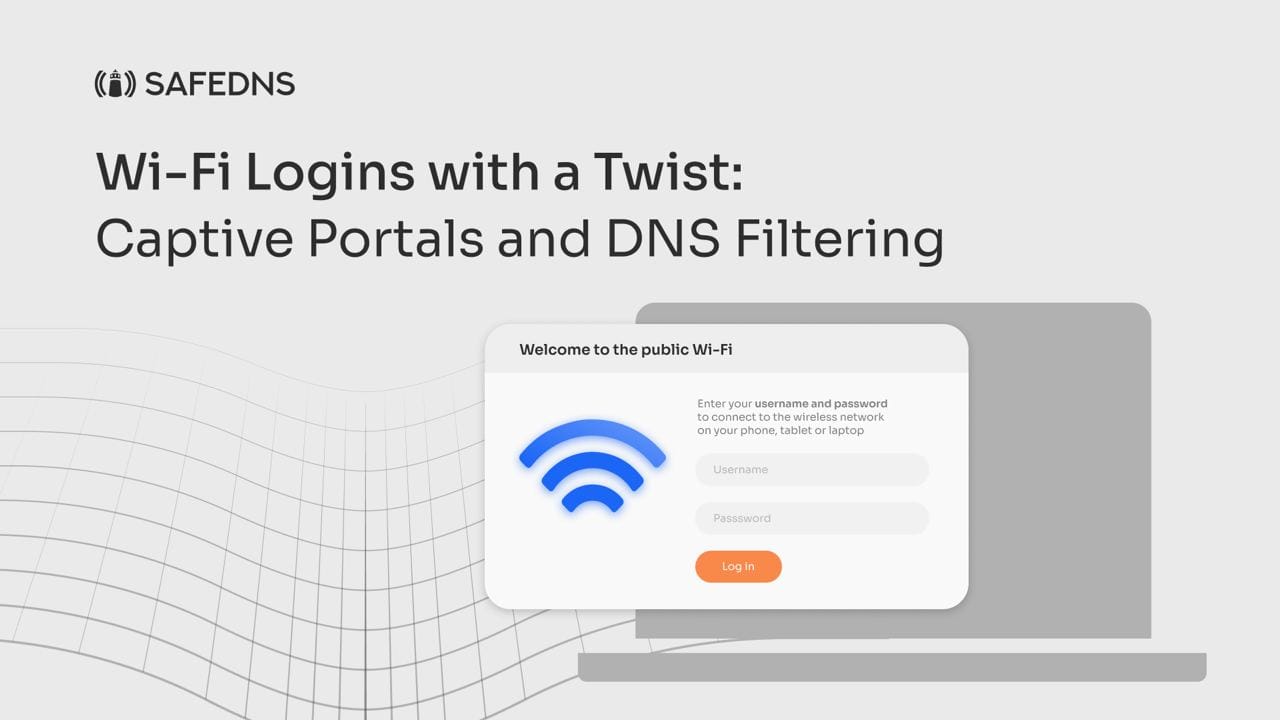
Wi-Fi Logins with a Twist: Captive Portals and DNS Filtering
Ever connected to a public Wi-Fi network at a coffee shop or airport, only to be greeted by a login page instead of the internet? That's a captive portal in action. It's like a gatekeeper, ensuring you meet certain requirements before granting access.
Benefits for Businesses:
- Security First: Captive portals keep unauthorized users out, protecting business networks from malware and hacking attempts. They can also enforce security terms to limit liability.
- Marketing on Autopilot: The captive portal is a captive audience! Businesses can use it to display targeted ads,special offers, or showcase their brand.
- Customer Engagement: Interactive portals with surveys, polls, or social media logins can gather valuable customer feedback and boost engagement.
- Data-Driven Decisions: Businesses can collect email addresses or social media logins to build email lists and gain customer insights for better marketing.
- Premium Wi-Fi: Businesses offering high-speed or premium connections can leverage captive portals for paid Wi-Fi access.
While captive portals are great at managing network access and leveraging that access for business benefits, they do not protect users from accessing harmful websites or inappropriate content after they have connected to the network. This is where DNS filtering steps in as a critical ally. It works as a second line of defense, blocking access to non-compliant and harmful websites right from the get-go. DNS filtering can block malicious sites even before you log in, keeping your device protected. Additionally, some portals can integrate with DNS filtering, allowing access to specific DNS servers only after successful login. This helps enforce company policies and security guidelines.
Combined, these technologies make it possible for businesses to provide a safe, controlled, and productive online experience. This is why DNS filtering becomes an invaluable partner for captive portals to make the environment not only accessible but also secure.
Potential Bumps in the Road:
Here's the catch: strong DNS filtering on users device might block the captive portal's redirection, preventing the login page from showing up. This can be frustrating!
- Roaming Client Blues: This often happens with software installed on devices (roaming clients) for DNS filtering. If users run into this, they should contact their company's IT team to add the captive portal to an "allow list".
- Local vs. Network DNS: By default, roaming clients might prioritize their own DNS servers over the network's.This can cause issues with captive portals that require the network's specific DNS server for redirection.
Finding the Right Balance:
While combining DNS filtering and captive portals offers great benefits, it's important to consider user experience, technical challenges, and privacy concerns. Striking a balance between security and usability is key. Additionally,organizations need to stay updated on evolving threats and regularly adjust their filtering policies.
The Final Word:
Captive portals and DNS filtering, when used together, create a powerful shield against online threats and unwanted content. This combo allows organizations to create secure and controlled network environments while empowering users to access resources safely. As security threats become more prevalent, this integration is a cornerstone of modern network security strategies.
Take advantage of the SafeDNS trial period and try all the best features

